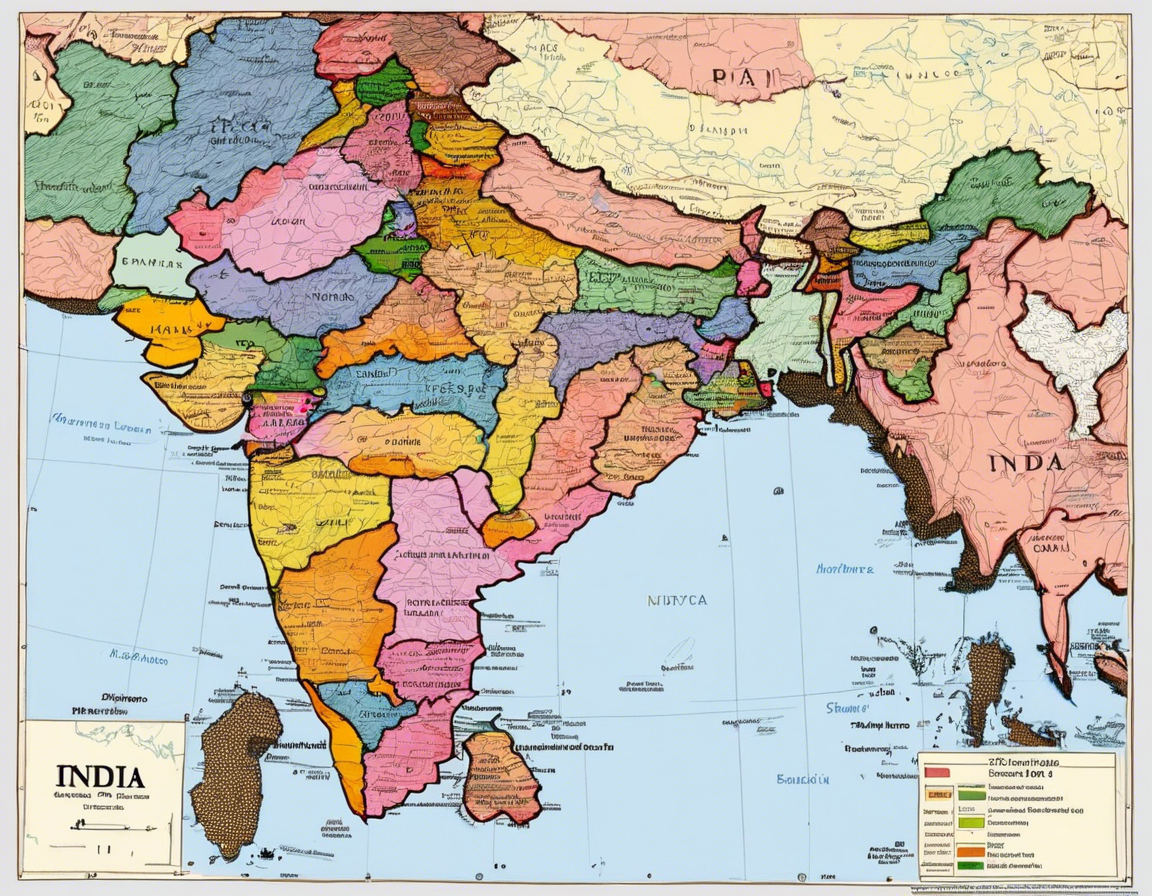India’s political map is a reflection of its rich history, diverse cultures, and complex administrative structure. With 28 states and 8 Union Territories, each with its own unique identity and governance, navigating India’s political landscape can be a daunting task. In this comprehensive guide, we will delve into the intricacies of India’s political map, providing a detailed overview of its states, Union Territories, and key political dynamics.
Overview of India’s Political Map
India is a federal union comprising 28 states and 8 Union Territories. The states are further divided into districts, which are the primary administrative units. Each state has its own government, headed by a Chief Minister, and a state legislature. The Union Territories, on the other hand, are governed directly by the central government of India.
States of India
- Uttar Pradesh: The most populous state in India, Uttar Pradesh is known for its rich cultural heritage and historical significance.
- Maharashtra: Home to the financial capital Mumbai, Maharashtra is one of the most industrialized states in India.
- Bihar: Located in the eastern part of India, Bihar is known for its agricultural economy and historical sites.
- West Bengal: A state with a unique blend of culture, art, and literature, West Bengal is home to the vibrant city of Kolkata.
- Karnataka: Known for its IT industry and stunning landscapes, Karnataka is a hub of innovation and technology.
Union Territories of India
- Delhi: The national capital territory of India, Delhi serves as the political center of the country.
- Puducherry: Located on the southeastern coast of India, Puducherry is known for its French colonial architecture and serene beaches.
- Lakshadweep: An archipelago off the southwestern coast of India, Lakshadweep is known for its pristine beaches and coral reefs.
- Chandigarh: A well-planned city serving as the capital of Haryana and Punjab, Chandigarh is known for its modernist architecture.
Key Political Dynamics
- Federal System: India follows a federal system of governance, where power is divided between the central government and the states. This division of power is enshrined in the Constitution of India.
- Political Parties: The Indian political landscape is dominated by several major political parties, including the Bharatiya Janata Party (BJP), Indian National Congress (INC), and regional parties like the All India Trinamool Congress (TMC) and Dravida Munnetra Kazhagam (DMK).
- Elections: India conducts regular elections at the national and state levels to elect representatives to the Parliament and state legislatures. The Election Commission of India oversees the conduct of elections in the country.
- Regional Dynamics: Each state in India has its own unique political dynamics influenced by factors such as regional identity, language, culture, and socio-economic conditions.
Frequently Asked Questions (FAQs)
- What is the role of the Chief Minister in a state government?
-
The Chief Minister is the head of the state government and is responsible for leading the state administration, implementing government policies, and representing the state in the state legislature.
-
How are Union Territories different from states in India?
-
Union Territories are directly governed by the central government of India, while states have their own elected governments and legislatures.
-
Who is the head of government in a Union Territory?
-
The Lieutenant Governor (LG) serves as the head of government in a Union Territory and represents the President of India.
-
How are states reorganized in India?
-
States can be reorganized through the process of bifurcation, trifurcation, or merging of existing states, which requires approval from the Parliament of India.
-
What is the significance of the President’s Rule in a state?
- In case of a constitutional breakdown in a state, the President’s Rule can be imposed, where the President of India assumes direct control of the state administration.
In conclusion, India’s political map is a mosaic of diverse cultures, languages, and governance structures. Understanding the intricacies of India’s political landscape is key to appreciating the complexities of its democratic framework and the dynamics of governance at the national and state levels.
